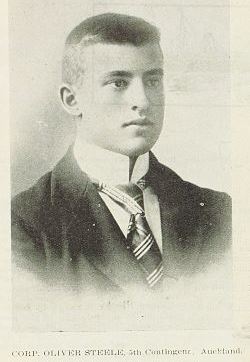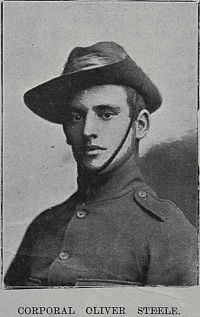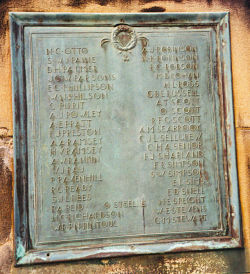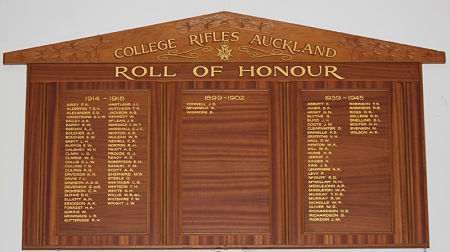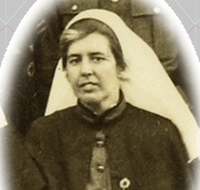WW1 Captain Oliver Steele
Oliver Steele was born 7 April 1882 in Wairoa, Hawke’s Bay where his family farmed at Owhio and Pipanui near Wairoa from 1874 to 1890 and subsequently moved to Auckland.
He was the eldest son of Thomas James Steele (1844 – 1923) and Malvina Florence Steele (Llewelyn) (1857 – 1940) of Cricklewood, Arney Road, Remuera, Auckland. There were ten children, six sons and four daughters. Together with Oliver, other family members who served in World War I, were Camilla Steele, Robert Alexander Steele, Montagu Steele and youngest sister Hilda Mary Steele.
Oliver attended Auckland Grammar School from 1894 – 1897. He was a keen sportsman and in the 1896 Sports events, he made a school record for the under 15year olds, 100 yards which was unbroken for many years. He was also one of the original members of the College Rifles Rugby Football Club in Remuera. [1]
In 1899, while still in his teens, Oliver left Auckland for Wellington sailing on 31 March 1900 on the vessel ‘Maori” for Beira, Portuguese East Africa, and became a professional soldier.
His first active service was as a member of the Fifth New Zealand Contingent of the New Zealand Rhodesian Field Force Artillery in the South African War, (1899 – 1902).
The South African War set the pattern for New Zealand’s later involvement in two world wars. Specially raised units, consisting mainly of volunteers, were despatched overseas to serve alongside forces from elsewhere in the British Empire. The success enjoyed by these troops fostered the idea that New Zealanders were naturally good soldiers who needed little training to perform well. See https://nzhistory.govt.nz/war/south-african-boer-war/introduction
After the South African war, Oliver gained one of ten commissions which were offered to colonials at the time, with the 1st Battalion of the Royal Berkshire Regiment. Oliver went to India with his regiment, where he was stationed for eight years. In 1909, he had a year’s furlough, during which time he returned to New Zealand. Shortly after returning to Delhi, India he received a commission of Captain.
When World War I broke out, Oliver was sent to Portsmouth, England, to continue his military studies and to undertake special duties. On 10 September 1914, he landed at St Nazaire on the Bay of Biscay, with drafts for his regiment, which he joined at Hazebrouck, North East France in time to take part in the great battle of the Aisne, where the Germans had broken through their attempt to reach Ypres (Ipres).
On 24 October 1914, the regiment was exposed to the fire of some of the Germans’ big guns and Captain Steele, with a few of his men rushed forward and succeeded in removing the sights from the guns, thus rendering them useless. He succeeded in regaining the trenches and was reorganising his men, when he was struck by a large shell and killed instantaneously.
One of the privates of the regiment in giving details of the engagement to a representative of the newssheet ‘Reading Mercury’ thus describes Oliver: “it was in this action we had the great misfortune to lose that most gallant officer, Captain Steele, who fell after the fighting had been in progress about three hours. Captain Steele was always thinking of his men. You would hear him giving us words of encouragement. As for taking cover, that was the last thing he thought of. He would walk through under very heavy fire and would see that everything was done properly. His loss is a great blow to us. It is certain that no officer was held in higher respect”.
The name of Captain O. Steele (Killed in Action) 1st Battalion Royal Berkshire Regiments appears in the ‘Times’ of 18th February 1915 among those mentioned in despatches (MiD) and recommended by Field Marshall Sir John French ‘for gallant and distinguished service in the field’. There was a communication from the War Office which included a message from Earl Kitchener expressing deepest sympathy with the relatives of Captain Steel. He was 32 years old. Oliver Steele was the first New Zealander to be killed in France. {2]
Other obituaries are:
• New Zealand Herald 3 November 1914, page 6
• Obituary: Auckland Grammar School Chronicle. 1915 v3, n.1. p9.
Oliver was awarded the following medals:
• Queen’s South Africa Medal (Cape Colony, Rhodesia, Orange Free State, Transvaal clasps)
• King’s South Africa Medal (South Africa 1901, South Africa 1902 clasps)
- 1914 (Mons) Star and Clasp which was awarded to men who received the 1914 Star and who actually served under the fire of the enemy in France and Belgium between the 5th August, 1914, and midnight 22nd-23rd November, 1914. [3]
- In the Commonwealth Graves Commission, Oliver Steele is registered as a soldier of the United Kingdom.
Oliver is also honoured in the following ways:
• Auckland Grammar School War Memorial, New Zealand
• Roll of Honour, College Rifles, Rugby Union Football & Sports Club, 33 Haast Street, Remuera, Auckland
• Roll of Honour, Devonport Primary School, granite tablet, 18 Kerr Street, Devonport, Auckland
• Roll of Honour, Auckland War Memorial Museum • Ypres (Menin Gate) Memorial, Ieper, West-Vlaanderen, Belgium, Panel 45
Other members of Oliver Steele’s family also served overseas.
2nd Lieutenant Montague (known as Monty) Steele, (service number 12/2917), lived in McMurray Road, Remuera and was in the Auckland Infantry Battalion, Samoan Advance Force, 7th Reinforcements. Prior to his enlistment, he was an accountant, at the Vacuum Oil Company in Auckland. He had been in the Territorials and had served eight months as a Second Lieutenant, Auckland Infantry Battalion in the Samoan Advance Party 12 August 1914 to 22 March 1915.On his return from Samoa he enlisted as a Lieutenant for the war in Europe on 30 April 1915, sailing on the Moeraki with the 7th Reinforcements rising to the rank of Major by his retirement on 1 May 1951. In Egypt, he was attached to the ‘School of Instruction ‘and in France, he transferred to the Machine Gun Corps on 8 March 1916. He was wounded on 22 September 1916, in France and was transferred to England, admitted to London General Hospital on 5 October 1916 and after discharge from Hospital taken on to work at Headquarters at Grantham from 17 November 1916. He received the 1914-1915 Star, G/S medal, Victory medal and was awarded the New Zealand Long and Efficient Service Medal. During the Second World War he served in Egypt from 5 January 1942 to 23 March 1942 and was posted to the Reserves as ‘not being medically fit for active service’ to New Zealand. He served in Fiji during 6 October 1939 to 6 June 1942 and was discharged as ‘medically unfit’ and returned to New Zealand. He retired from the army on 1 May 1951. He died on 29 May 1981.
Sapper Robert Alexander Steele, (Service number 4/472), was in the Field Engineers, in the Main Body that left New Zealand on 16 October 1914. Prior to enlisting on 15 August 1914, he had military training in Auckland and was working for a farmer, W. H. Black in the Waitomo Caves area. He was a Sapper or Driver in the New Zealand Field Engineers, Division Signal Corps, a month from being 24 years of age, 5ft 8 1/2inches tall, of fair complexion, blue eyes and fair hair. He sailed on 16 October 1914 from Wellington for Suez, Egypt on the vessel ‘Maunganui’ On 7 July 1915 he was admitted to hospital in Alexandria, Egypt with appendicitis and on 31 July 1915 returned to New Zealand via Tahiti on 7 August 1915. He was discharged on 9 October 1915 as ‘being unfit for military service, although fit for employment for civil life’. He died 13 January 1924, and is buried in Tutira, Hawkes Bay.
Florence Camilla Harrowell (nee Steele) was born on 31 January 1881 in Wairoa Hawkes Bay. She attended Auckland University College (now the University of Auckland) to train as a nurse and is mentioned in their Roll of Honour.
On her enlistment in 8 January 1917, she is described at 5ft 10 inches tall, with dark eyes, dark hair and was a nursing sister at Mt Pleasant Private Hospital in Auckland. As a member of the New Zealand Army Nursing Service (NZANS), she served as a nursing sister on the New Zealand hospital ship ‘Maheno’ to Samoa for 6 months in 1917. She resigned on 28 May 1917 to take up a civilian nursing post in the Apia Hospital, Samoa, with an annual salary of 100 pounds and 6 pounds uniform allowance
In July 1917 Camilla married Major Edwin H. Harrowell (Service numbers: 5; 573 ; 12/907)], who was the Military Secretary to Administration in Samoa. http://muse.aucklandmuseum.com/databases/Cenotaph/34778.detail They had one son on 14 October 1919 [http://muse.aucklandmuseum.com/databases/Cenotaph/20233.detail Dudley Steele Harrowell (50760). He served as a Lieutenant in the 23rd Infantry Battalion in World War II and died of wounds on 27 March 1943 in Tunisia in World War II. Camilla died 26 December 1961 in Auckland and is buried at O’Neill’s Point cemetery, 122 Bayswater Avenue, North Shore Auckland, Row N, Plot 52.
Oliver’s youngest sister Hilda Mary Steele (Service number 22/60) (AANSC) was one of the first twelve nurses to volunteer for service in WW1 and set sail to Egypt on 31 March 1915. She had a distinguished career as a frontline nurse in Egypt and France and later in Auckland in community service. Read more about Hilda here. [5]
